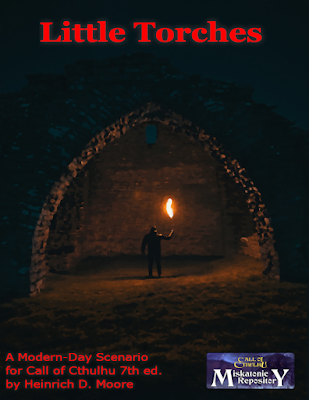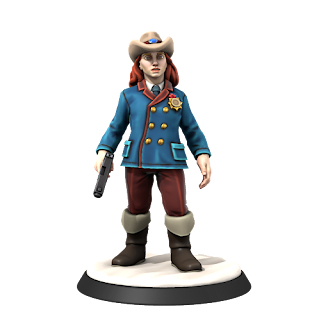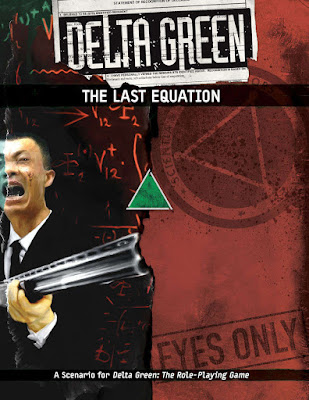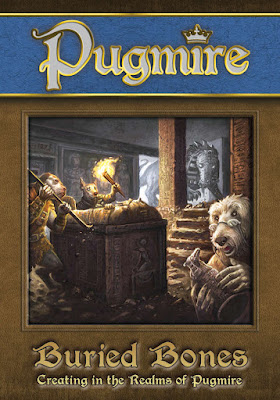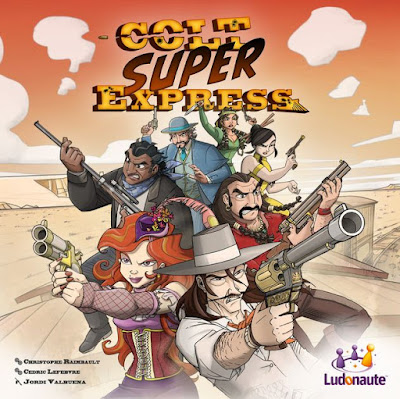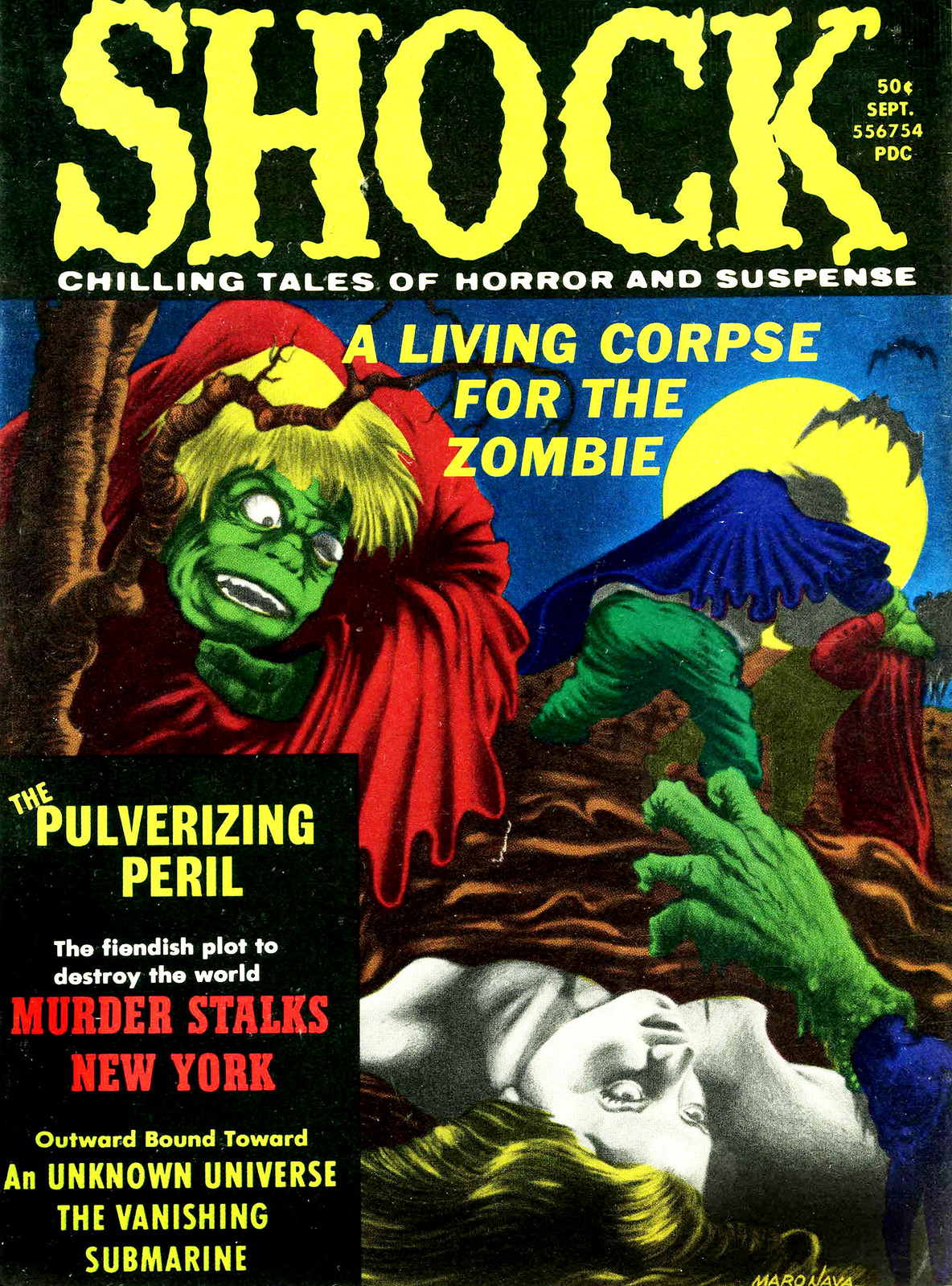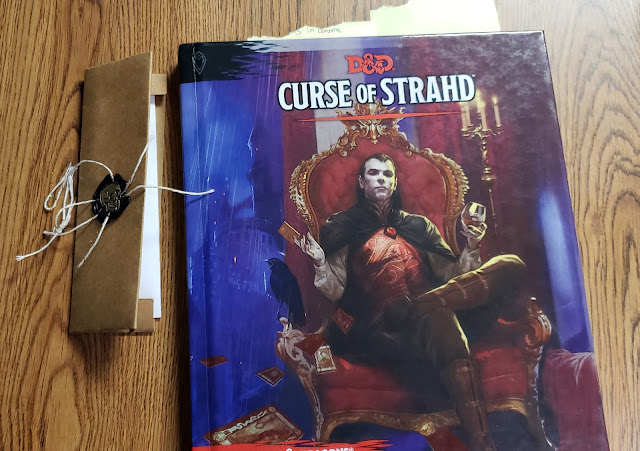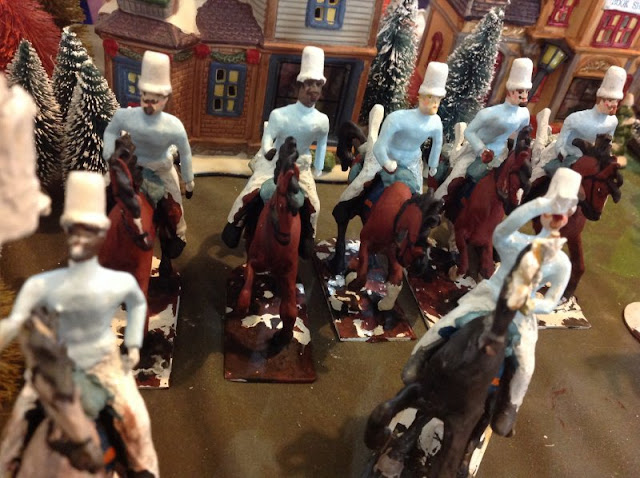Much like the
Miskatonic Repository for
Call of Cthulhu, Seventh Edition, the
Jonstown Compendium is a curated platform for user-made content, but for material set in Greg Stafford’s mythic universe of Glorantha. It enables creators to sell their own original content for
RuneQuest: Roleplaying in Glorantha and
HeroQuest Glorantha (Questworlds). This can include original scenarios, background material, cults, mythology, details of NPCs and monsters, and so on, but none of this content should be considered to be ‘canon’, but rather fall under ‘Your Glorantha Will Vary’. This means that there is still scope for the authors to create interesting and useful content that others can bring to their Glorantha-set campaigns.
—oOo—
 What is it?Valley of Plenty
What is it?Valley of Plenty is the first part of
The Jaldonkillers Saga, a campaign for
QuestWorlds (
HeroQuest Glorantha).
It is a one-hundred-and-fifty page, full colour, Print on Demand softback book.
Although it needs a slight edit in places,
Valley of Plenty is nicely presented with some reasonable artwork. The cover is pleasingly bucolic.
Where is it set?Valley of Plenty is set in the lands of the Blue Jay clan of the Dundealos tribe in southwest Sartar on the border with Prax.
When is it set?Valley of Plenty begins in 1602 and will explore events which take place in 1602, 1605, 1607, and 1608.
Who do you play?Members of the Wildlings, the gang led by the younger daughters of Dinorth Many-Spears, leader of the Blue Jay clan and King of the Dundealos tribe. They are in turn children, teenagers, young adults, and finally adults, who will play and then grow into their roles in the tribe.
What do you need?Valley of Plenty requires
QuestWorlds to play. (At the time of the publication of
Valley of Plenty, only the
QuestWorlds - System Reference Document is available. Alternatively,
Valley of Plenty can be run using
HeroQuest: Glorantha.).
Valley of Plenty also makes reference to
Sartar: Kingdom of Heroes,
Sartar Companion,
Sartar Player’s Primer,
The Coming Storm: The Red Cow Volume I,
The Eleven Lights: The Red Cow Volume II,
The Guide to Glorantha, and
The Glorantha Sourcebook. Of these,
Sartar: Kingdom of Heroes will provide details of the gods and their associated cults that are also worshiped by the Blue Jay clan, whilst
The Glorantha Sourcebook provides wider background.
What do you get?Valley of Plenty is notable as a release on the Jonstown Compendium for being the first for use with
QuestWorlds rule-system—Chaosium, Inc.’s update for
HeroQuest. It is both a sourcebook for, and the first part of,
The Jaldonkillers Saga, a campaign set in Sartar which will take a group of characters from the idyll of their childhood through the sundering of their tribe and beyond to its reconstitution in exile and then the efforts made to retake both their tribe’s lands and glory. This is framed against the invasion of Sartar by the Lunar Empire and its repulsion following the Dragonrise.
Valley of Plenty only covers the first part of this and sets everything up and deeply involves the players and their characters in their clan through notable events in the early lives.
The player characters begin play as children. They are members of the Wildings, a gang lead by the younger daughters of Dinorth Many-Spears leader of the Blue Jay clan and King of the Dundealos tribe, who have plenty of time to play and have fun. No matter what trouble they get into, the Wildlings have the favour of the king—though sometimes not his wife—and this has interesting implications for the campaign. It means that as the campaign progresses and the characters grow, the characters’ friendship with the king’s daughters and his favour enable them to grow into a place close to the king and the events that will beset the clan, rather than being the default set-up from the outset. So initially, the campaign will have a little of the feel of
Swallows and Amazons or
Five Go Adventuring Again, but this will change as the characters grow, become adults, and assume their full roles in the clan.
The structure of the campaign is episodic. The first takes place when the Player Characters are eight or nine, beginning with a day that many players will recognise from a hot summer’s day from their own childhoods, before going on to explore the consequences of the day. From an adult perspective, it is very light-hearted, but not so from that of children. In particular, the second scenario, ‘Two Frogs Too Many’ presents a challenge typical of that which might be faced by an adult adventurer in Glorantha, but here appropriately scaled down to match the ability levels of the children. (Mechanically, of course, this does mean that the abilities of the Player Characters or the threat they face have been scaled down, but for
QuestWorlds, they have been scaled down narratively.) The second is set in 1605 when they are eleven or twelve, have some responsibilities, but still time to slip away on an adventure, one that brings then face-to-face with the clan’s enemies and then have a day at the races. In 1607, the Player Characters will undergo their rites of passage and become adults, before in 1608, engage in adult activities—a raid and the difficulties of engaging with a rival clan. The Player Characters will have their first encounter with the Lunars, a sign of things to come in future parts of The Jaldonkillers Saga.
In between these periods of intense activities, the players roll for events which will affect them and their families and learn of ongoing events in the tribe and the wider world. All the adventures though, are really well done, in presenting tasks and challenges appropriate to the ages of the Player Characters, the risks and responsibilities growing with each new chapter. Each period comes with additional seeds and throughout the bonuses to be gained and changes to be made to each character’s stats as they grow up and eventually gain responsibilities, meaning that the characters grow up both mechanically and narratively into adults and members of the tribe. At the same time, both they and the Game Master are growing into
QuestWorlds’ mechanics, the campaign introducing different elements of the rules as it progresses.
In addition to the mechanical progression,
Valley of Plenty also presents the background information that the Player Characters would know, also progress. Notably, this is done through two player handouts, ‘Child’s Knowledge’ and ‘Youngster’s Knowledge’, which present their world view rather than that the clan’s adults. These present a Sartarite clan from first principles, then second principles, and then the wider world, introducing Glorantha in an easy to digest step-by-step fashion. Other handouts cover the gods commonly worshiped by the Blue Jay Clan and the Dundealos tribe and details of the small city of Dundealosford, and the surrounding area. For the Game Master, there is more information about the Jaldonkillers tribe, including very full write-ups of the cults of Elmal (the Jaldonkillers being Horse Orlanthi, though the Player Characters are ‘City Jays’, living in Dundealosford), Redalda, Andred, and Drogarsi the Skald, as well as the Shamanic Tradition of the Steadfast Circle. These are exceptionally well done, and full of suggestions as what benefits worshippers—and the Player Characters—can gain from belonging to each cult as well as extra details that the Game Master can bring into play and each cult’s role in Blue Jay society. The cult of Andred—she is the goddess of victory and justice deferred—is new, as is the shamanic tradition write-up, and it should be noted that the cult descriptions for Elmal, Redalda, and Drogarsi are written from a non-Orlanthi perspective. So if a player would participate in a different campaign, he would need to be apprised of the differences. Further, not all of the cults which the Blue Jays belong to are covered in
Valley of Plenty and a Game Master may need access to
Sartar: Kingdom of Heroes if a player decides his character belongs to one of those.
On the downside, some of these handouts are lengthy and in places it feels as if the players need to do a bit of homework to play
Valley of Plenty. As much as it is designed as an introduction to Glorantha—although one from a particular point of view—there is still a degree of buy-in upon the part of the players. Another issue is that
Valley of Plenty only takes
The Jaldonkillers Saga campaign so far, that is from childhood to adulthood, and not as far as the events surrounding the sundering of the tribe. Of course,
Valley of Plenty sets up and hints at the events to come, but anyone expecting more will be disappointed, plus the scenarios in
Valley of Plenty do not really end on a high point or a low point, or indeed with any great sense of a climax. These issues are minor, however, and will not really impinge on a play-through of
Valley of Plenty.
With
Valley of Plenty, the Jonstown Compendium has not one, but two good starter campaigns—campaigns that start from first principles about Glorantha and who the Player Characters are in the world—and take them deeper into the setting. The other of course is
Six Seasons in Sartar. It is not difficult to draw comparisons between the two, because they share a number of similarities. They both focus on the one clan, their storylines both involve the sundering of their clans and subsequent reclamations, and both have the Player Characters beginning play before they are adults. However, whilst the events of
Six Seasons in Sartar are more direct, those of
Valley of Plenty are gentler, with more adventures before the Player Characters come of age. Of course, the big difference between
Six Seasons in Sartar and
Valley of Plenty is that the former is written for
RuneQuest: Roleplaying in Glorantha whereas the latter is written for
QuestWorlds. In fact, this is a good thing, since it means that they do compete with each other, though there is nothing to stop a Game Master adapting
Valley of Plenty for use with
RuneQuest: Roleplaying in Glorantha. However, she would need to take care as the
RuneQuest: Roleplaying in Glorantha mechnics are not as forgiving when handling children Player Characters as
QuestWorlds is.
Valley of Plenty is an excellent campaign, an excellent campaign for Glorantha, and an excellent entry point for playing in Glorantha—so good that it could easy have been published by Chaosium. It guides both Game Master and her players, step-by-step, into the game and the world of Glorantha as well as the mechanics of
QuestWorlds, in an enjoyably gentle fashion, supporting the process with an easily digestible background and details that can be brought into play. As an introduction to, and a first campaign—literally and narratively—for, Glorantha for
QuestWorlds, this is a must buy, and were not for the fact that
Valley of Plenty is written for use with
QuestWorlds rather than
RuneQuest: Roleplaying in Glorantha, one of the first purchases which should be made from the Jonstown Compendium.
Is it worth your time?Yes—
Valley of Plenty is a near perfect introduction to gaming in Glorantha and should be your first
QuestWorlds purchase.
No—
Valley of Plenty is another Glorantha campaign starter and for another set of rules when there is more enough for
RuneQuest: Roleplaying in Glorantha right now.
Maybe—
Valley of Plenty contains background as well as adventures which could be adapted to your campaign or indeed, rules system, of your choice.
 Name: Akhenaten Unveiled
Name: Akhenaten Unveiled